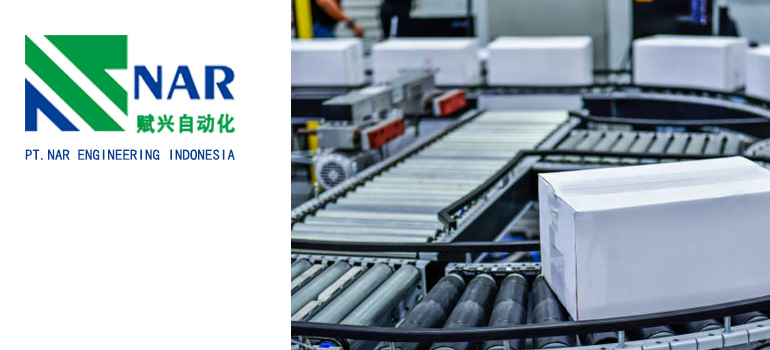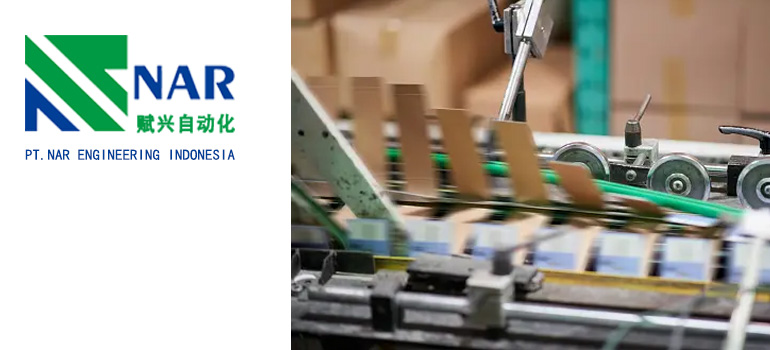Summary:
Elevate Efficiency: Optimizing Belt Conveyor Design for Success
Key Components of Belt Conveyor Systems
Principles of Belt Conveyor Design Efficiency
Advanced Materials Selection for Optimal Belt Conveyor Design
Design Considerations for Efficient Belt Conveyor Layouts
Key Components of Belt Conveyor Systems
When discussing the key components of belt conveyor systems, it’s essential to delve into the various elements that make up these systems. Here are the main components:
Conveyor Belt: The conveyor belt is the primary component of the conveyor system, responsible for carrying materials from one point to another. It’s typically made of rubber, PVC, or other durable materials and comes in various widths and lengths to accommodate different applications.
Pulleys: Pulleys are essential components that support and guide the conveyor belt. They consist of a cylindrical structure with a central axis and are typically mounted at both ends of the conveyor system. Pulleys may be drive pulleys, which provide power to move the belt, or idler pulleys, which support the belt and maintain proper tension.
Drive Unit: The drive unit, often located at one end of the conveyor system, provides the power necessary to move the conveyor belt. It typically consists of an electric motor, gearbox, and coupling mechanism. The drive unit converts electrical energy into mechanical motion to propel the conveyor belt.
Support Structure: The support structure provides a stable framework for the conveyor system, ensuring proper alignment and functionality. It may consist of steel beams, frames, or other structural components designed to withstand the weight of the conveyor belt, materials, and operational forces.
Idlers: Idlers are rollers or sets of rollers positioned along the conveyor route to support the conveyor belt and reduce friction. They help maintain proper belt tension, guide the belt along its path, and minimize sagging or misalignment. Idlers are typically arranged in sets at regular intervals along the conveyor length.
Belt Cleaners: Belt cleaners are devices installed along the conveyor belt to remove debris, spillage, and material buildup. They help maintain belt cleanliness, prevent material carryback, and improve overall conveyor efficiency. Belt cleaners come in various types, including scrapers, brushes, and plows, depending on the specific application and material handled.
Take-Up System: The take-up system is responsible for adjusting and maintaining proper tension in the conveyor belt. It accommodates changes in belt length due to loading, stretching, or temperature variations, ensuring consistent performance and preventing belt slippage or damage.
Safety Equipment: Safety equipment, such as emergency stop switches, guards, and safety barriers, is crucial for protecting personnel and equipment around the conveyor system. These components help prevent accidents, injuries, and damage to the conveyor system, ensuring safe operation in compliance with safety regulations.
By understanding and optimizing these key components, conveyor systems can achieve reliable performance, efficient material handling, and enhanced operational safety.
Principles of Belt Conveyor Design Efficiency

Belt conveyor design efficiency is governed by several key principles aimed at maximizing throughput, minimizing energy consumption, ensuring safety, and optimizing overall performance. Here are some essential principles of belt conveyor design efficiency:
Material Selection and Handling: Choosing the right conveyor belt material is crucial for efficiency. It should be durable, wear-resistant, and suitable for the specific application and material being transported. Additionally, proper handling techniques, such as loading the belt evenly and avoiding overloading, help maintain efficiency.
Optimal Belt Tensioning: Proper tensioning of the conveyor belt is essential for efficient operation. Over-tensioning can cause unnecessary wear on the belt and components, while under-tensioning may lead to slipping and reduced throughput. Maintaining the correct tension ensures smooth operation and minimizes energy consumption.
Minimization of Friction and Resistance: Friction between the conveyor belt and various components can significantly affect efficiency. Designing the system to minimize friction points, using low-friction materials, and ensuring proper alignment of rollers and pulleys help reduce resistance and energy loss.
Effective Drive Systems: The choice of drive system influences conveyor efficiency. Selecting the appropriate drive type, such as electric, hydraulic, or pneumatic, and optimizing motor size and speed control contribute to efficient operation. Variable frequency drives (VFDs) and intelligent control systems can adjust conveyor speed based on load requirements, further improving efficiency.
Optimized Layout and Configuration: Efficient conveyor design considers factors such as conveyor length, inclination angle, and routing to minimize energy consumption and maximize throughput. Proper layout and configuration reduce unnecessary bends, transitions, and elevation changes, optimizing material flow and reducing wear on the system.
Regular Maintenance and Monitoring: Implementing a proactive maintenance program is essential for sustaining conveyor efficiency. Regular inspection of components, lubrication, alignment checks, and timely replacement of worn parts ensure smooth operation and prevent costly downtime. Additionally, monitoring system performance through sensors and automation allows for early detection of potential issues and optimization opportunities.
Safety and Ergonomics: Efficient conveyor design prioritizes safety and ergonomics to protect workers and equipment. Implementing safety features such as emergency stops, guards, and proper training minimizes accidents and downtime. Additionally, ergonomic considerations, such as adjustable height and accessibility, improve operator comfort and productivity.
By adhering to these principles, conveyor designers can create systems that deliver optimal performance, energy efficiency, and reliability, contributing to overall operational success.
Advanced Materials Selection for Optimal Belt Conveyor Design
Selecting advanced materials is crucial for optimizing belt conveyor design, ensuring durability, efficiency, and longevity. Here’s a detailed look at how advanced materials can be chosen for each key component:
Conveyor Belt:
Advanced Rubber Compounds: Choose conveyor belts made from high-quality rubber compounds engineered for specific applications. Advanced compounds offer superior abrasion resistance, flexibility, and longevity compared to standard rubber materials.
High-Performance Fabric Reinforcement: Utilize advanced fabric materials such as aramid (e.g., Kevlar) or steel cord reinforcement for increased strength and load-bearing capacity, extending the lifespan of the conveyor belt.
Pulleys:
Corrosion-Resistant Coatings: Opt for pulleys coated with advanced materials like ceramic, polyurethane, or stainless steel to resist corrosion and wear, especially in harsh environments.
Composite Pulleys: Consider composite pulleys reinforced with fibers such as carbon or glass for reduced weight, improved strength-to-weight ratio, and decreased rotational inertia, enhancing efficiency and reducing power consumption.
Drive Unit:
Efficient Motor Technologies: Select advanced motor technologies like brushless DC (BLDC) or synchronous reluctance motors for higher efficiency, precise speed control, and reduced energy consumption compared to traditional induction motors.
Regenerative Braking Systems: Implement regenerative braking systems to recover energy during deceleration and braking, improving overall energy efficiency and reducing operating costs.
Support Structure:
High-Strength Steel Alloys: Choose support structures fabricated from high-strength steel alloys with advanced mechanical properties, offering superior load-bearing capacity and structural integrity while minimizing weight and material usage.
Modular and Lightweight Designs: Optimize support structures with modular and lightweight designs, utilizing advanced fabrication techniques like laser cutting and robotic welding for improved efficiency and ease of installation.
Idlers:
Low-Friction Bearings: Utilize idler rollers equipped with advanced bearing materials such as ceramic or polymer coatings to reduce friction, minimize power losses, and extend maintenance intervals.
Self-Cleaning Designs: Incorporate self-cleaning idler designs featuring advanced materials with anti-stick properties, reducing material buildup and enhancing conveyor efficiency in dusty or sticky environments.
By leveraging advanced materials and technologies across these key components, belt conveyor systems can achieve superior performance, reliability, and sustainability, contributing to optimized operations and reduced lifecycle costs.
Design Considerations for Efficient Belt Conveyor Layouts
Designing efficient belt conveyor layouts involves careful consideration of several key factors to ensure smooth material flow, minimize energy consumption, and optimize operational performance. Here are some design considerations for efficient belt conveyor layouts:
Material Flow Path:
Straight-Line Configuration: Whenever possible, design the conveyor layout with straight-line sections to minimize material transfer points and reduce the risk of spillage or product damage.
Smooth Transitions: Ensure smooth transitions between conveyor sections, including straight runs, curves, inclines, and declines, to maintain consistent material flow and prevent bottlenecks.
Optimal Conveyor Length and Configuration:
Right-Sizing Conveyor Length: Determine the appropriate conveyor length based on material handling requirements, production throughput, and facility layout to minimize energy consumption and maximize efficiency.
Consider Incline and Decline Angles: Incorporate inclines and declines into the conveyor layout judiciously, considering the characteristics of the transported material, required throughput, and available space.
Spacing and Positioning:
Optimized Spacing: Maintain proper spacing between conveyors and other equipment to facilitate material transfer, equipment maintenance, and personnel access while minimizing floor space usage.
Clearance Requirements: Ensure adequate clearance around the conveyor system for maintenance access, safety compliance, and emergency egress.
Integration with Material Handling Equipment:
Seamless Integration: Integrate the belt conveyor system seamlessly with other material handling equipment, such as loading and unloading stations, sorting systems, and storage facilities, to streamline material flow and minimize handling steps.
Automation and Control Integration: Implement automation and control systems to synchronize conveyor operation with upstream and downstream processes, optimizing material handling efficiency and reducing manual intervention.
Safety Considerations:
Safety Guarding and Barriers: Install safety guards, barriers, and emergency stop devices at critical points along the conveyor layout to protect personnel and equipment from hazards, ensuring compliance with safety regulations.
Ergonomic Design: Design conveyor workstations with ergonomic considerations in mind, providing operators with comfortable and safe working conditions to minimize fatigue and improve productivity.
Future Expansion and Flexibility:
Scalability: Design the conveyor layout with scalability in mind to accommodate future growth and changes in production demands, allowing for easy expansion or reconfiguration of the system as needed.
Modular Components: Utilize modular conveyor components and flexible configurations to facilitate easy modifications and upgrades without requiring extensive downtime or costly modifications.
By carefully considering these design factors, engineers can develop efficient belt conveyor layouts that optimize material handling processes, enhance productivity, and support the overall operational objectives of the facility.
Maybe you are interested in the following: Streamlining Operations: Best Practices in Conveyor Belt Installation

